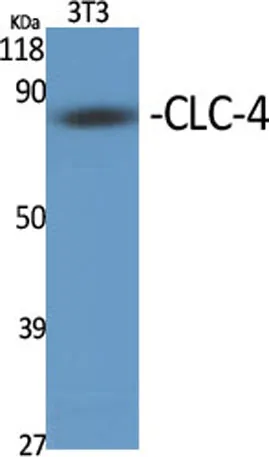CLC-4 rabbit pAb
CAT:
855-ES1991-02
Size:
100 μL
Price:
Ask
- Availability: 24/48H Stock Items & 2 to 6 Weeks non Stock Items.
- Dry Ice Shipment: No




CLC-4 rabbit pAb
- Description: Chloride voltage-gated channel 4 (CLCN4) Homo sapiens The CLCN family of voltage-dependent chloride channel genes comprises nine members (CLCN1-7, Ka and Kb) which demonstrate quite diverse functional characteristics while sharing significant sequence homology. Chloride channel 4 has an evolutionary conserved CpG island and is conserved in both mouse and hamster. This gene is mapped in close proximity to APXL (Apical protein Xenopus laevis-like) and OA1 (Ocular albinism type I), which are both located on the human X chromosome at band p22. 3. The physiological role of chloride channel 4 remains unknown but may contribute to the pathogenesis of neuronal disorders. Alternate splicing results in two transcript variants that encode different proteins. [provided by RefSeq, Mar 2012],
- Synonyms: CLCN4; H(+)/Cl(-) exchange transporter 4; Chloride channel protein 4; ClC-4; Chloride transporter ClC-4
- Gene ID: 1183
- UniProt: P51793
- Cellular Locus: Early endosome membrane ; Multi-pass membrane protein. Late endosome membrane ; Multi-pass membrane protein. Endoplasmic reticulum membrane ; Multi-pass membrane protein. Lysosome membrane ; Multi-pass membrane protein. Recycling endosome membrane ; Multi-pass membrane protein. Localizes to late endosome membrane, lysosome membrane and recycling endosome membrane in the presence of CLCN3..
- Host: Rabbit
- Species Reactivity: Human, Mouse, Rat
- Immunogen: The antiserum was produced against synthesized peptide derived from human CLCN4. AA range:221-270
- Clonality: Polyclonal
- Validated Applications: WB, IF, ELISA
- Stability: 1 year
- Concentration: 1 mg/mL
- Dilution: Western Blot: 1/500 - 1/2000. Immunofluorescence: 1/200 - 1/1000. ELISA: 1/40000. Not yet tested in other applications.
- Molecular Weight: 85kD
- Storage Conditions: PBS with 0.02% sodium azide and 50% glycerol pH 7.4. Store at -20°C. Avoid repeated freeze-thaw cycles.
